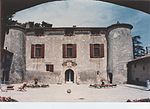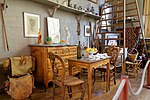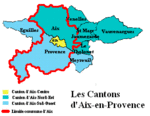IAE Aix-en-Provence
1955 establishments in FranceAix-Marseille UniversityEducational institutions established in 1955Institut d'Administration des Entreprises
The Aix-Marseille Graduate School of Management, also known as IAE Aix-en-Provence or IAE Aix is a business school in the South of France, part of Aix-Marseille University, the largest University in the French-speaking world, founded in 1409. In 2022, the Financial Times ranked its Masters in Management program 67th in the world. In 2013, it is awarded by Eduniversal business schools ranking by Palmes as a "3 palmes - EXCELLENT Business School". It is also continuously ranked by Financial Times, with an average rank of 3 years at No. 45.
Excerpt from the Wikipedia article IAE Aix-en-Provence (License: CC BY-SA 3.0, Authors).IAE Aix-en-Provence
Clos de la Guiotière, Aix-en-Provence Puyricard
Geographical coordinates (GPS) Address External links Nearby Places Show on map
Geographical coordinates (GPS)
| Latitude | Longitude |
|---|---|
| N 43.5865 ° | E 5.4231 ° |
Address
Institut d'Administration des Entreprises
Clos de la Guiotière
13540 Aix-en-Provence, Puyricard
Provence-Alpes-Côte d'Azur, France
Open on Google Maps





